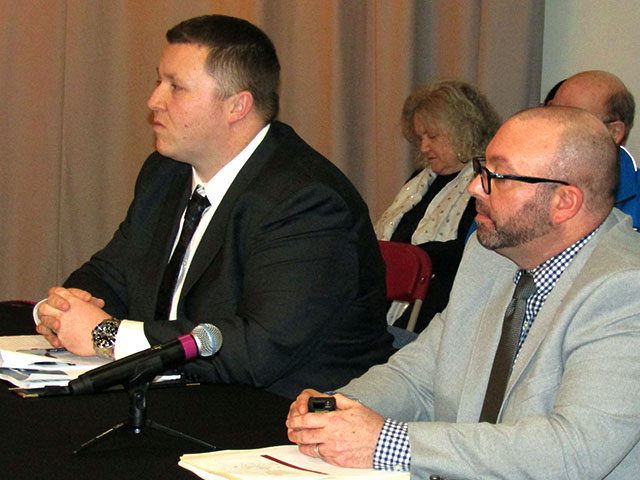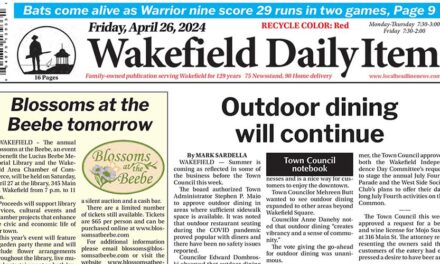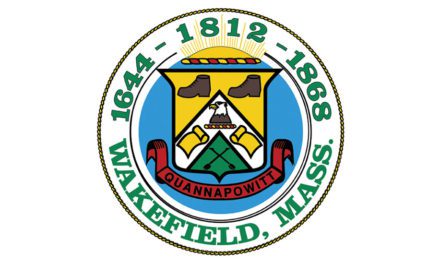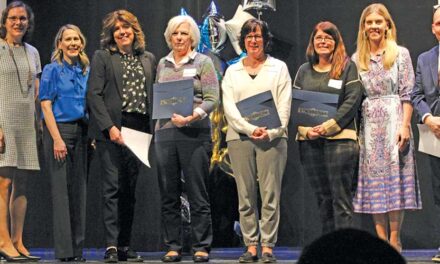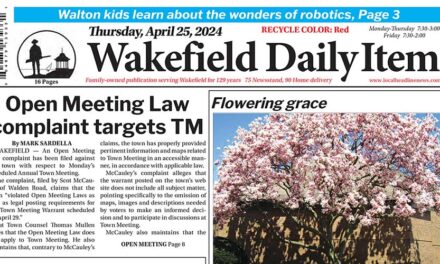Published February 26, 2020
By MARK SARDELLA
WAKEFIELD — People love to complain about the roads.
Now, the DPW leadership has come up with a Strategic Road Repair and Maintenance Plan to keep the roads in better shape and save money in the long run by investing in preventative maintenance to extend the life span of roads and delay expensive rebuilds.
The plan, which could cost more than $19 million and would be funded through borrowing, is expected to be on the Annual Town Meeting warrant in May, giving voters an opportunity to debate and vote on the proposal. But DPW Director Joseph Conway and Town Engineer William Renault were at Monday’s Town Council meeting to provide a preview of what they plan to present at Town Meeting.
The goal of the strategic plan would be to systematically improve the town’s 88-mile road network to an acceptable standard. To do that, the DPW will request funding to allow for consistent investments so that the town’s roadway network does not deteriorate to the point that would result in more costly repairs. They would continue to coordinate roadway projects with planned utility work by the WMLGD, DPW Water and Sewer, National Grid/Eversource, etc. It would also take into account implementing improvements when appropriate, such as drainage, sidewalks, safety and accessibility.
Renault said that the plan involves having a consultant rate the roadway surfaces around town and assign them to various “treatment bands,” that he illustrated in a PowerPoint presentation.
New roads would be assigned a dark blue band indicating than no work is required. Roads assigned to a lighter blue band would be those that need routine maintenance like crack sealing, Renault explained. This type of maintenance costs about $0.50 per square yard.
Roads assigned to a green “preventative maintenance” band require targeted patching (more than just filling potholes), thin overlays or seals. Such repairs have a cost of $6 per square yard.
Streets in need of minor rehabilitation would be assigned to a yellow band. In these cases, Renault said, the top two inches of asphalt is removed and replaced. This approach costs $20 per square yard.
Finally, roads needing major rehabilitation are assigned to a red band. These reconstruction projects run $45 per square yard.
Once the roadways are evaluated and assigned to the appropriate treatment band, Renault said, a cost/benefit analysis would be used to determine priorities. Traffic counts and project cost would be factors in the cost/benefit analysis.
Renault talked about the current roadwork backlog. He said that approximately 14.1 miles (16 percent) of the town’s roads fall into the category where no work is currently required.
About 10.7 miles (12 percent) of the town’s roadways need routine maintenance like crack sealing. The estimated cost of this work is $94,779. Another 11.5 miles (13 percent) of the roads need preventative maintenance (patching, thin overlays or seals) at a cost of about $1,129,065.
Renault said that 36.6 miles (42 percent) of the town’s roads need minor rehabilitation work (mill and overlay) at an estimated cost of $8,059,934.
Roads needing major work comprise about 14.9 miles (17 percent) at an estimated cost of $10,370,965.
The total cost of all work in the current inventory is $19,654,743.
Renault also projected each category out to the year 2025, when the cost would increase to $29,613,564.
Renault noted that the town gets about $673,000 annually in Chapter 90 state aid for roadway work. Last year, Town Meeting appropriated another $750,000 for the roads. Other sources of funding include grants like the Complete Streets grant for Albion Street ($400,000), The MassDOT TIP (which will fund the “Envision” downtown improvements) and the DPW operating budget, which funds crack sealing and pothole filling.
Renault outlined five possible scenarios and their implications.
Under Scenario 1, the town would make do with the $670,616 in Chapter 90 funds. Under Scenario 2 the town continues its practice of adding $750,000 for a total of $1,423,616. Under Scenario 3, the town would add $1,500,000 annually, bringing the total spent on roads to $2,173,616. Scenario 4 would have the town appropriate an additional $2 million, bringing the total to $2,673,616. Scenario 5 would have the town spend $2,500,000 annually on roads in addition to the Chapter 90 funds for a total of $3,173,616.
Renault said that under scenarios 1 and 2, the roads are projected to continue an overall decline as the amounts would not be sufficient to keep up.
Under Scenario 3, the roadways would see a slow overall improvement over the next 10 years. Scenarios 4 and 5 would result in more rapid improvement to the town’s roads over the next decade.
Renault and Conway recommended Scenario 5.
Town Administrator Stephen P. Maio said that while the town could obviously not appropriate $19 million in one year, funding the recommendation would be doable by staggering bonds over a period of years. He noted that as other debt drops off, the cost would fit into the town’s bonding schedule.
The key takeaway, Maio said, is that if the town continues its current approach to the town’s roads, it will cost twice as much to do the work five years from now.
Town Council Chairman Edward Dombroski called this type of approach to road maintenance “long overdue.” He maintained that it was not a good return on investment to pay more in the long run by allowing roads to continue deteriorating.
Councilors Jonathan Chines and Julie Smith-Galvin said that they wanted to defer voting until they had a clearer picture on how the funding would work.
But Councilor Ann Santos said that the board would only be voting at this stage to instruct Maio to draft an article for consideration at Town Meeting. Maio agreed to elaborate on the details of how the bonding would work when he brings the Town Meeting article to the Town Council for a vote.
Ultimately, the Town Council voted unanimously to direct Maio to draft a Town Meeting article to fund the plan recommended by Conway and Renault.

